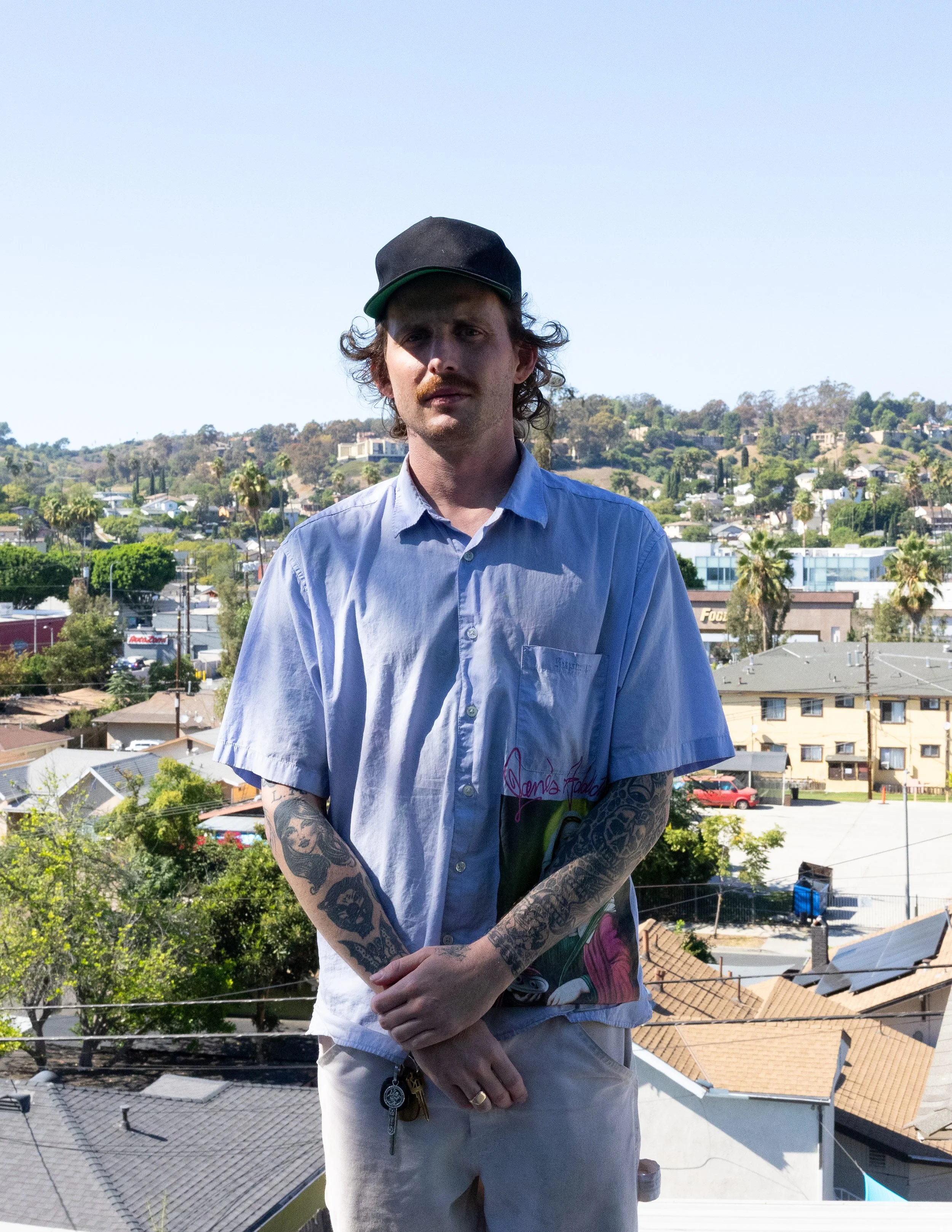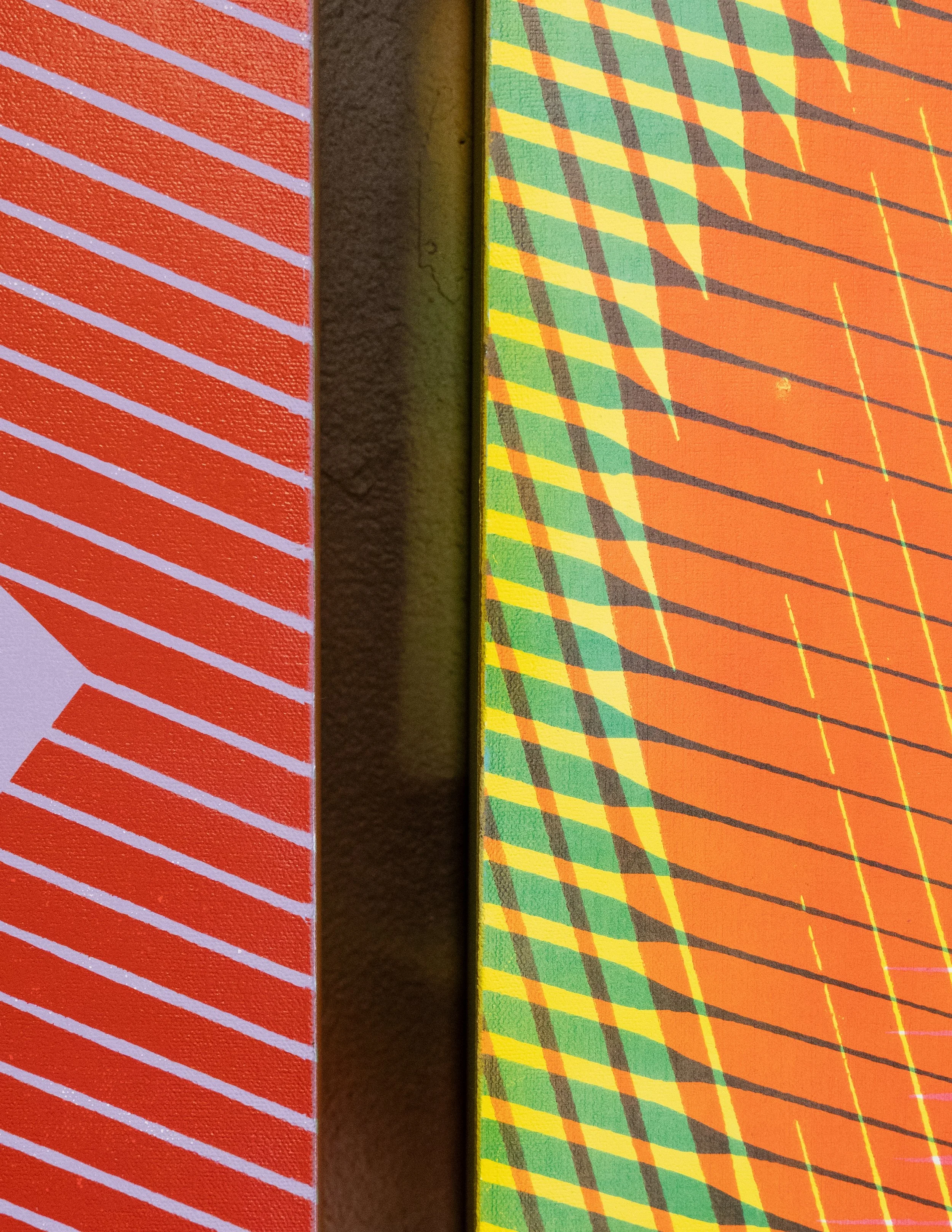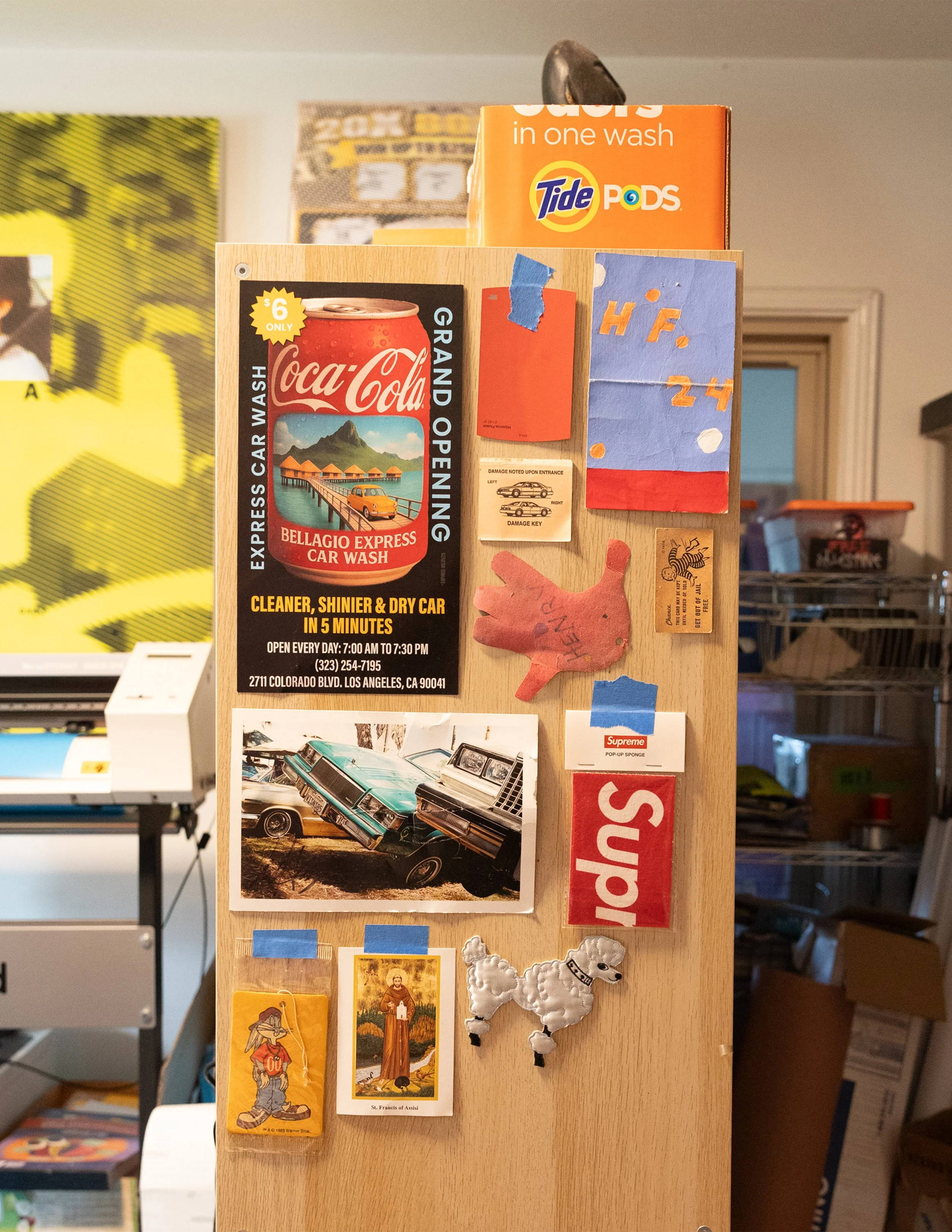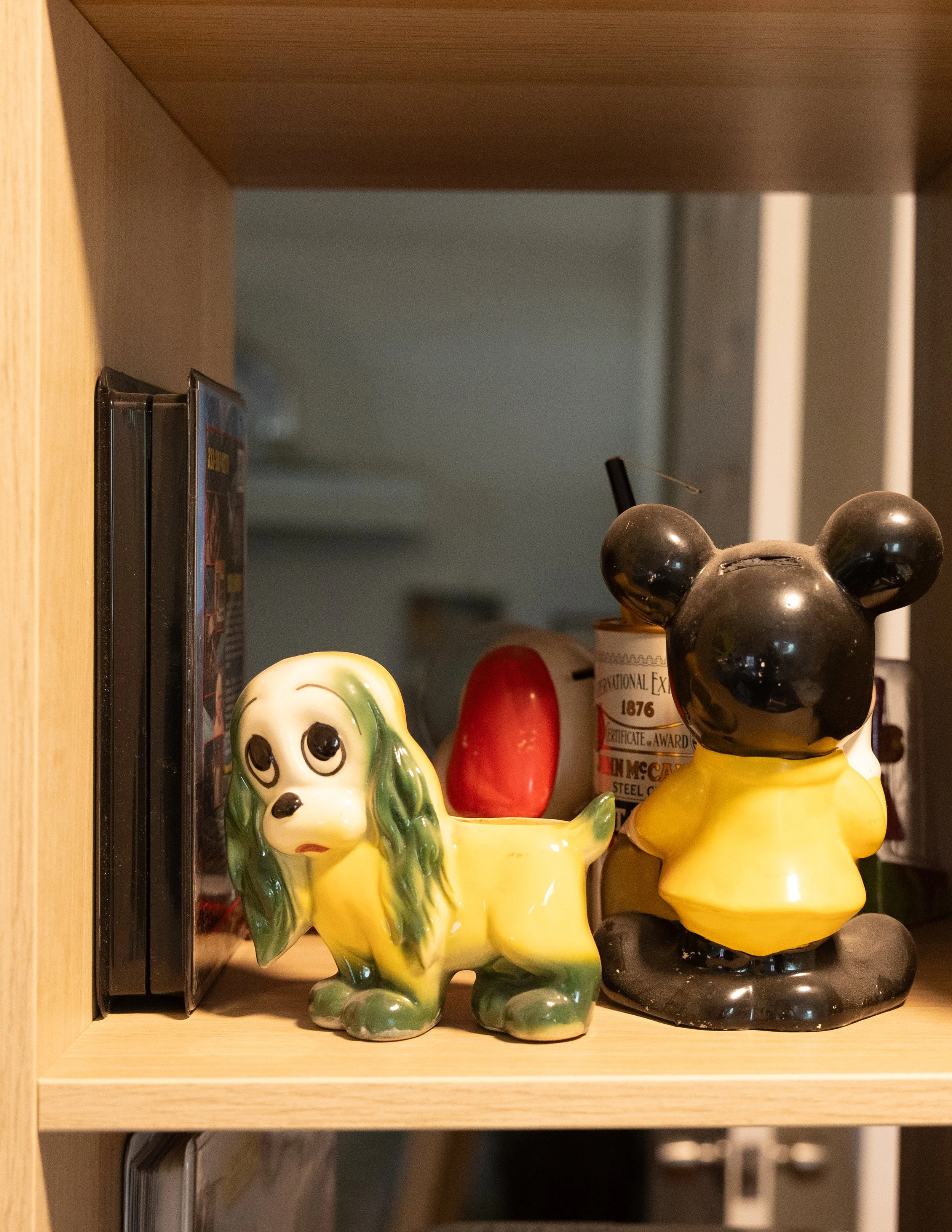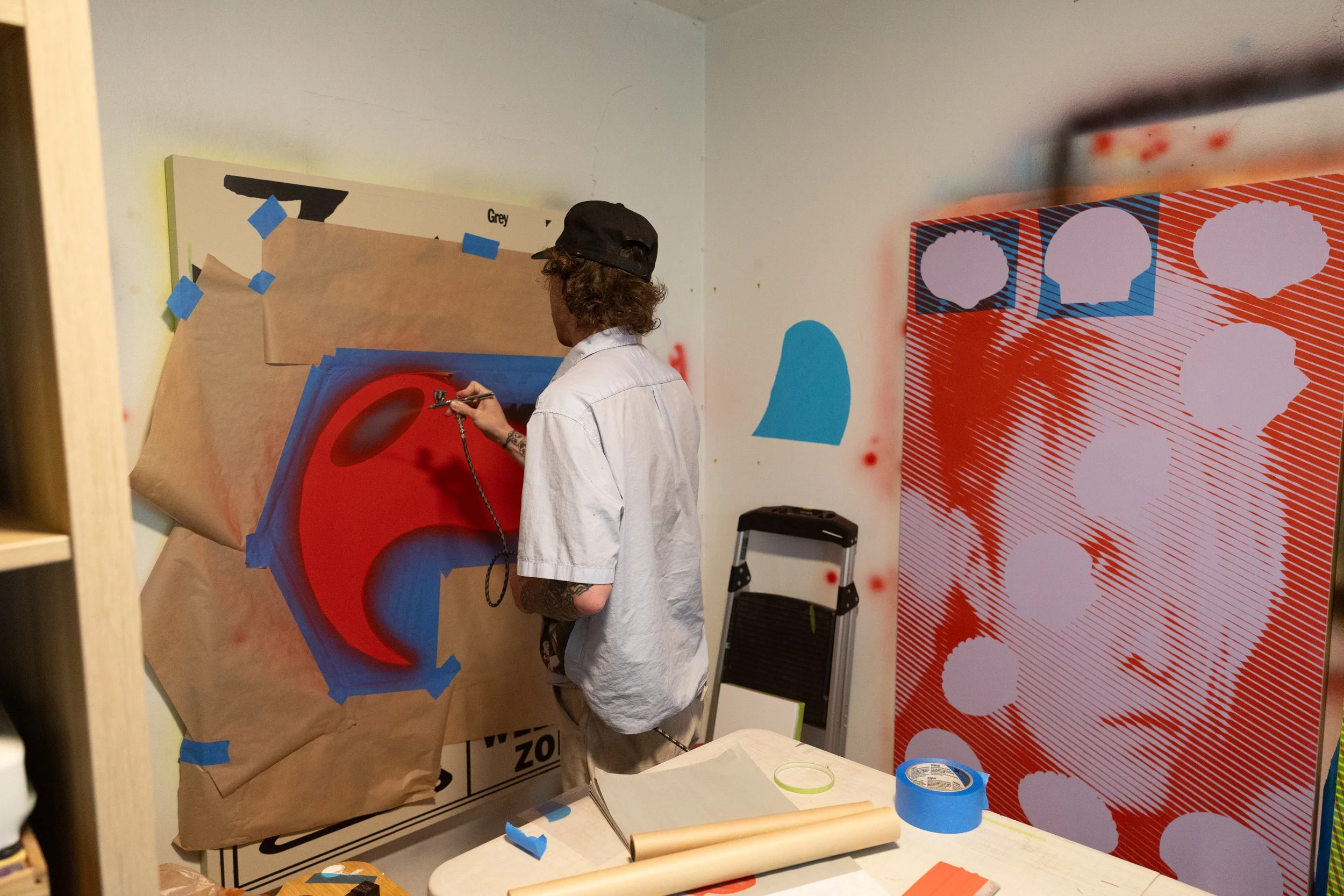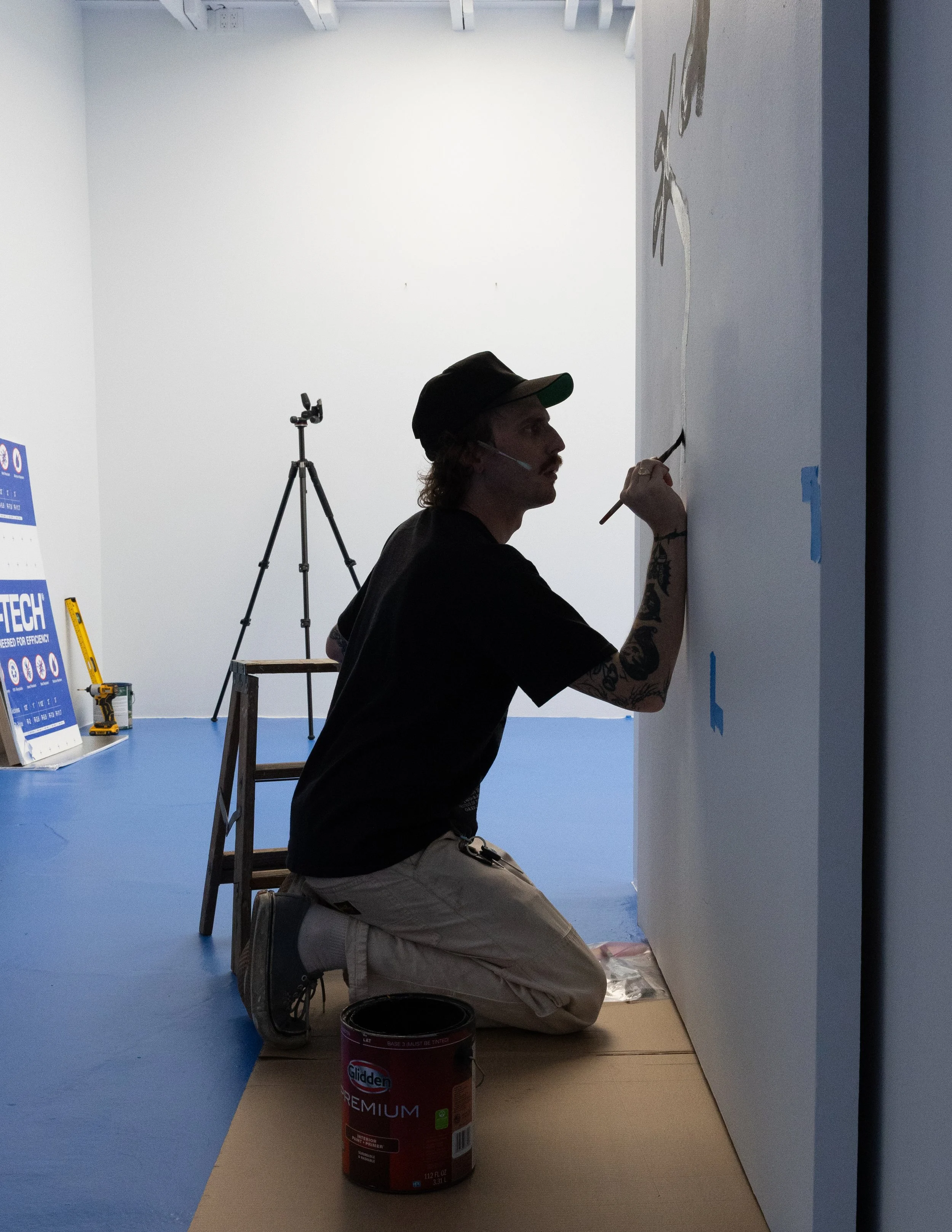Candy Apple Grey Interview
Henry Fey: On Nostalgia, Sampling, and Candy Apple Grey
Candy Apple Grey | Henry Fey Solo Exhibition : October 11th, 2025 - November 8th, 2025
GGLA: Candy Apple Grey is a title you derived from an album title by Husker Du, a band recognized for their lack of compromise while presenting their work to a wider audience. What sentiments do you share with their arc as an artist and your own pursuits as you continue on in your career?
HF: I ended up titling the show CAG pretty organically. I was introduced to this album by my dad, he gave me the cassette and I would listen to it while I was working in the studio. I was always attracted to the title on a surface level simply because it reminded me of car painting i.e low riders are typically painted in “kandy colors” but after digging a little deeper on the origin and initial reception of the album, I found out that fans generally considered the title CAG can be interpreted as a yin yang type metaphor of beauty (candy apple), and a more introspective sadness.
I wanted to title the show this because not only was CAG Husker Dü first major label debut and this will be my first solo presentation in LA, but I also felt like it set the stage for the bigger concepts of the show i.e the sampling and remix of images.
GGLA: What intentions do you have when you decide to remix and combine certain ideas and subjects together within a work? Are you concerned with communicating specific connections between things or is it more about relaying connections that you have discovered in process?
HF: When I talk about “remixing”, I’m strictly referring to when I remake a painting using the same basic imagery or text elements. I think that backbone of my process involves “sampling” similar to when someone like J Dilla, for example, would find a vocal from an unknown $1 bin record and “flip” the sample by cutting out the snippet, adding instrumental elements and thus creating something new. Theres always a basic idea that I want to get across to the viewer within my work - sometimes it can be as simple as the punchline of a joke. I like to include humorous elements within the work. I think if someone laughing with the work rather than at the work that’s a sign of a good piece.
GGLA: In a world where the digital landscape is bombarding us with constant imagery and momentary focus, what can you say about the importance you place on an object by deciding to paint it, and taking it out of the digital space?
HF: I’ll be the first to say that I have a love-hate with the constant stream of images that I deal with every day! On one hand I have never felt so exposed to interesting images and topics delivered directly to me with minimal effort, but I am guilty of wasting countless hours “doom-scrolling” and looking at brain rot type imagery. I’ve always felt like we had a visceral reaction to certain images by taking a sampled image, color separating it and then painting it. It isolates the image, elevates it to a higher level and essentially forces the viewer to spend more time with the image rather than scrolling right past. It’s basically my way of saying “Hey! This picture means something to me.”
GGLA: Your process seems to require a great deal of patience to achieve a desired result. Has that influenced your views on the immediate nature of digital media versus creating tangible, real memories?
HF: I’ve always been attracted to the different processes in painting and printmaking. Once I started to work more in this process, it has definitely forced me to consider the imagery I utilize because it is quite a process to get the image ready to paint after all this time spent in the studio. I really have been enjoying getting out in nature as well as making things with my hands. It has been refreshing to be creative and less tied to technology.
GGLA: Were you always intending for your work to communicate at so many different levels? There are so many avenues of appreciation when it comes to seeing these works from across the room, a few feet away, and up close.
HF: Yes! I love that these paintings function as opt art and can be viewed multiple ways.

